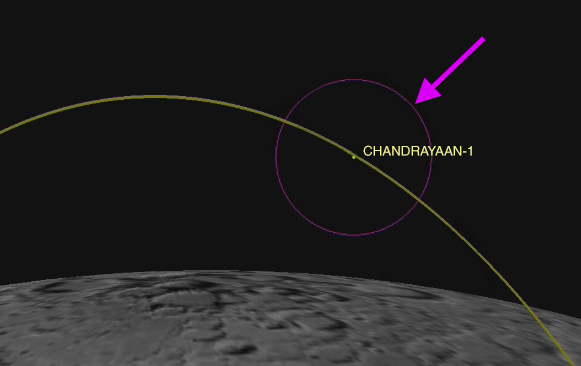The Phys.org article New NASA radar technique finds lost lunar spacecraft describes the use of radar to relocate two spacecraft that were in orbit around the moon but who's orbit had not been actively tracked for a while. (See also the JPL version.)
"We have been able to detect NASA's Lunar Reconnaissance Orbiter [LRO] and the Indian Space Research Organization's Chandrayaan-1 spacecraft in lunar orbit with ground-based radar," said Marina Brozovic, a radar scientist at JPL and principal investigator for the test project. "Finding LRO was relatively easy, as we were working with the mission's navigators and had precise orbit data where it was located. Finding India's Chandrayaan-1 required a bit more detective work because the last contact with the spacecraft was in August of 2009." (emphasis added)
The article goes on to mention the use of powerful radar signals broadcast by the Deep Space Network's 70m Goldstone dish and received by the Green Bank 100m dish.
Question: Since the deep space network can perform ranging on spacecraft much farther away (tens of thousands of times farther than the moon) by itself, why was it necessary to use a non-colocated, non-DSN dish to receive signals in this case?
Later in the article:
Radar echoes from the spacecraft were obtained seven more times over three months and are in perfect agreement with the new orbital predictions. Some of the follow-up observations were done with the Arecibo Observatory in Puerto Rico, which has the most powerful astronomical radar system on Earth. Arecibo is operated by the National Science Foundation with funding from NASA's Planetary Defense Coordination Office for the radar capability.
...which suggests to me at least that the Arecibo dish could perform the measurement alone, without the need of a second dish.
Edit: In both cases a pseduo-random coded radio signals are broadcast at the satellite. For spacecraft in deep space it is received, amplified, and simultaneously and coherently rebroadcast back, while for radar ranging the return signal is passively reflected back. Here coherently means that the carrier signal for the transmission is carefully phase-locked with the incoming signal's carrier so that even though it is at a different frequency, the doppler shift can be recovered and analyzed much in the same way as in radar.
Due to the $1/r^4$ loss of signal intensity, radar detection of spacecraft can not be used much past a few lunar distances, so for much longer distances the amplification and coherent rebroadcast is required. From a signal processing point of view, delay and doppler information are recovered by correlating the received signal with the transmitted code. However from an operational point of view there may be substantial differences.
above: "Radar imagery acquired of the Chandrayaan-1 spacecraft as it flew over the moon's south pole on July 3, 2016. The imagery was acquired using NASA's 70-meter (230-foot) antenna at the Goldstone Deep Space Communications Complex in California. This is one of four detections of Chandrayaan-1 from that day." Credit: NASA/JPL-Caltech. From here
above: "This computer-generated image depicts the Chandrayaan-1's location at time it was detected by the Goldstone Solar System radar on July 2, 2016. The 120-mile (200-kilometer) wide purple circle represents the width of the Goldstone radar beam at lunar distance. The white box in the upper-right corner of the animation depicts the strength of echo. Inside the radar beam (purple circle), the echo from the spacecraft alternated between being very strong and very weak, as the radar beam scattered from the flat metal surfaces." Credit: NASA/JPL-Caltech. From here
above: Cropped section of the previous figure, with an arrow added to draw attention to "The 120-mile (200-kilometer) wide purple circle represents the width of the Goldstone radar beam at lunar distance." Credit: NASA/JPL-Caltech. From here
above: Cropped section of the previous figure to draw attention to "The white box in the upper-right corner of the animation depicts the strength of echo." Credit: NASA/JPL-Caltech. From here



